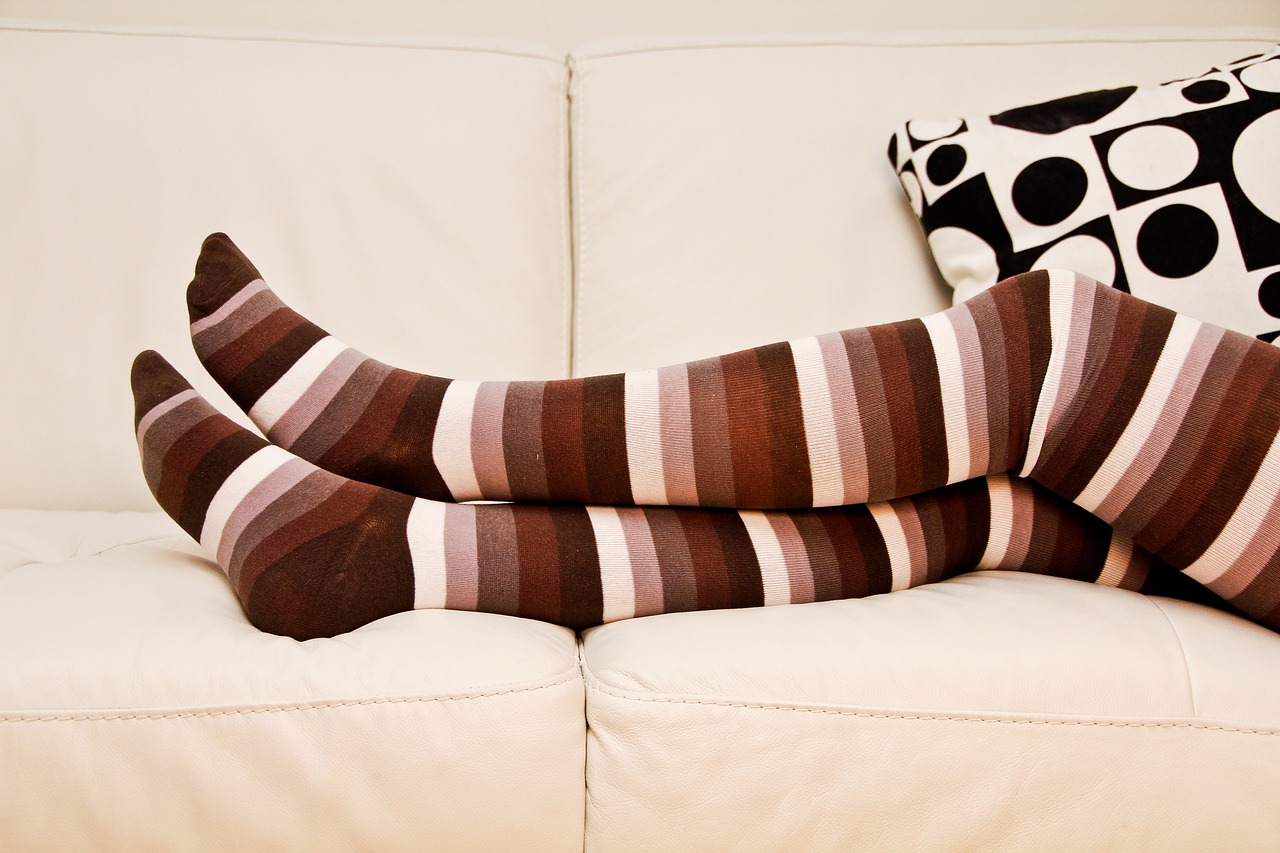Compression socks and stockings: what you need to know

You may have seen them in stores or on the feet of someone next to you on a plane, but what exactly are compression socks and stockings? How do they help blood flow, and should you wear them before stepping on to your next flight? We asked Dr. Philip Alapat, assistant professor of medicine in the section of pulmonary, critical care and sleep medicine, about these supportive devices and how they can help.
Question: What are compression socks/stockings?
Answer: They are socks or stockings that apply gentle pressure to your lower extremities to reduce swelling and keep the veins from getting too dilated. They vary by the amount of pressure they exert. A rough guide is something like 10-20 mm Hg is mild pressure, 20-40 mm Hg is moderate pressure, and more than 40 mm Hg is high pressure. The amount of pressure used depends on the significance of the swelling. In general, dilated veins will require less pressure compression than generalized lower extremity swelling.
Q: What are the benefits of using them?
A: Swelling in the lower extremities is a concern for many who are on their feet for long periods, especially as we get older and our veins and lymphatics don’t work as well as they used to. Swelling, especially if significant, adds to the weight of our legs and makes us work harder. Additionally, swelling in our lower extremities may lead to ill-fitting shoes as well as adverse health consequences like bruising of the skin and poor wound healing of the swollen areas. Some people have abnormal veins and/or lymphatics of the legs that worsen these concerns. In all these conditions, compression stockings may be able to help reduce the swelling and/or prevent the veins from getting too dilated. The risk of a blood clot in the lower extremity veins may be improved if those veins are not dilated so much.
Q: Are there specific conditions when people need to wear compression stockings? Can you wear them if you do not have a vascular condition?
A: Any condition that contributes to more swelling of the lower extremities or dilation of the veins, especially with gravity, can benefit from the use of compression stockings. Compression stockings also can be recommended for pregnancy and the associated lower extremity swelling.
Q: Are there times when people should wear them, like on airplanes or car trips? Or is it something that should be worn every day?
A: Any situation that promotes swelling of the lower extremities can benefit from the use of compression stockings. If being on your feet for long periods causes swelling of your legs, try some compression stockings. I know many nurses who use compression stockings regularly. Long periods of inactivity also promote lower extremity swelling because of the lack of lower limb activity, such as long plane/automobile trips. Stockings can certainly help here, but so will regular walking or seated leg exercises.
Q: Is there a limit on how long you should wear them?
A: There is not a limit, but too much of anything can be harmful. In this case, if the pressure applied by the compression stocking contributes to persistently reduced blood flow to any area, there is a risk of injury.
Q: How do you keep from overheating in them in the warmer months?
A: This is difficult as wearing any type of long socks in warm weather may not be comfortable. Taking the socks off at times and keeping the legs elevated may be a way of keeping comfortable in warmer weather. Some compression stockings are made to be worn specifically in warmer climates. In general, the higher-pressure compression stockings tend to be thicker to allow them to exert the necessary pressure.
By Anna Kiappes




Compression socks are essential. Just been for my leg circulation scan. Everything good with consultant recommending that everyone should be wearing compression socks